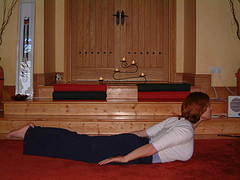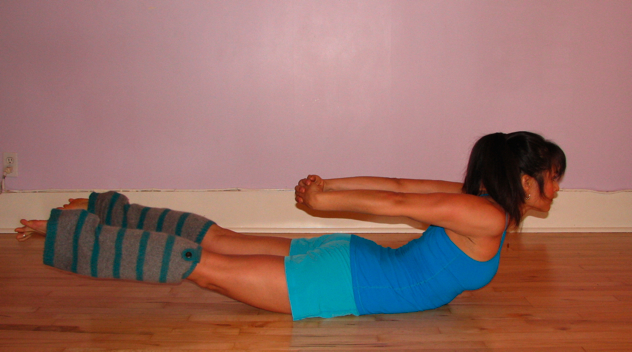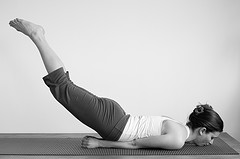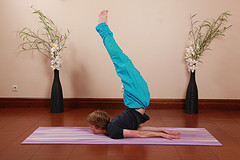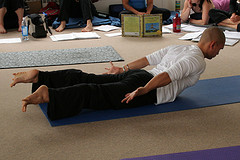Little did we know that one of the oldest yoga poses would be one of the most controversial poses. Salabhasana, or Locust Pose, is one of the few poses named in the ancient yoga texts. Asanas receive so much attention in the western yoga world. This makes sense, because we are a very active "Do-Oriented" culture. We want to be doing something and asanas are a concrete way to access the more subtle limbs on the eight-limbed path of Yoga. Unfortunately, not a great deal is written about the asanas until the 20th century. There are two Sutras in Patanjali's Yoga Sutras which mention asanas and if we reference two of the existing ancient yoga texts, namely the Gheranda Samhita and the Hatha Yoga Pradipika, there are relatively few asanas mentioned. Now where all of these hundreds of yogasanas originated is not well-known. The Yoga Korunta apparently outlined the asanas of the Ashtanga Yoga System of Sri. K Pattabhi Jois and as this was written on biodegradable banana leaves, it is no longer in existence and can no longer be referenced.Advanced Help
BKS Iyengar's Light on Yoga, is the most extensive modern text and references some 200 asanas. According to Light on Yoga, Salabhasana is practiced with both arms and legs raised off the ground. According to the Ashtanga Yoga Practice of the late Sri Pattabhi Jois, in the Second Series, Salabhasana A and B are practiced with the legs raised and the arms remain on the ground, outstretched in Salabhasana A and placed palms down with elbows by the sides in Salabhasana B, similar to Bhujagasana Pose.
Additionally, in searching for information about Salabhasana, the photos around the web are quite varied. In some poses the arms are in Baddhangullyasana behind the back as demonstrated by the illustrious Elsie Escobar. Other Salabhasana poses are practiced with the hands on fists, placed underneath the body pressing against the pubic bone.
Finally, there is the variation called Viparita Salabhasana, which BKS Iyengar describes as reverse Salabhasana with the arms outstretched on the floor and the legs over the head similar to Dwi Pada Viparita Dandasana with the neck extended so the practitioner is resting on the neck and chin.
Iyengar also references the pose was similar to a pose found in the Gheranda Samhita called Makarasana, or Crocodile pose, where the legs are lifted off of the ground and the arms are interlaced behind the head as they are in Salamba Sirsasana I, Head Balance.
As a global yoga community, how important is it to standardize these practices? How do we know which one is correct? Is it important to let people find their own way or do we rely on the texts as they were handed down in their original form?
I practice this pose because I have sacro-illiac pain and Salabhasana is beneficial for strengthening this area of the body. Lately, I have been practicing with Gary Kraftsow's DVD, ViniYoga Therapy for Low Back Sacrum and Hips. His version of the pose which also comes from the Krishnamacharya Lineage, the same lineage as Sri K. Pattabhi Jois and BKS Iyengar. This version is called Viminasana. The arms remain on the floor as in Bhujangasana, the legs and chest lift on an inhale, the legs open wide and close back together while keeping the legs and chest lifted. On another inhale the legs move wide and the chest raises slightly and on an exhale the legs move back together and both the legs and chest move back down to the floor. I practice this way because it is very therapeutic, but the other variations of the pose will also help strengthen the back. If you are pregnant, this pose is not recommended and if you have lower back pain, avoid the more intense versions of this pose. Salabhasana is also recommended for improving digestion.
How do you like to practice Salabhasana?
Listen to the Pronunciation of Salabhasana. Courtesy of the Online Sanskrit Pronunciation Guide.[audio:http://www.ihanuman.com/media/audio/Sanskrit/Asanas/Salabhasana.mp3]

